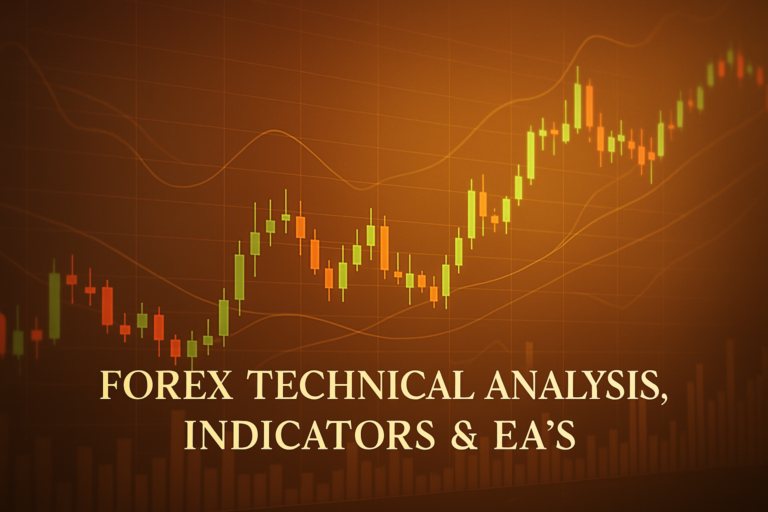
On Balance Volume OBV is a key indicator in Forex trading for understanding market trends and making informed decisions.
On Balance Volume, or OBV, is a powerful tool in the world of Forex trading. It helps traders understand the relationship between volume and price movement. By analyzing OBV, traders can identify trends and make informed decisions. This is crucial for anyone looking to succeed in Forex, whether you’re a beginner or a seasoned pro.
However, many traders struggle with OBV. Beginners often find it confusing, while experienced traders might overlook its significance. Understanding how to use OBV effectively can make a big difference in your trading success. In this article, we will explore OBV in detail, providing you with the knowledge you need to apply it for your benefit.
We’ll cover what OBV is, its history, its advantages and disadvantages, and practical strategies for using it in your trading. You’ll also learn how to apply OBV on popular platforms like MT4 and MT5.
Bulls Power is another important concept in Forex trading, which helps to measure the strength of buyers in the market. For a deeper understanding, check out our guide on Bulls Power.
What is On Balance Volume OBV?
On Balance Volume (OBV) is a simple yet effective indicator that combines price and volume to show the strength behind price movements. Think of it this way: if a stock’s price goes up and the volume is high, it indicates strong buying pressure. Conversely, if the price rises but the volume is low, it suggests weak buying. OBV helps traders spot these trends easily.
Types of On Balance Volume OBV
There are different types of OBV that traders can use. The most common ones are:
- Simple OBV: The basic version, which adds volume on up days and subtracts on down days.
- Exponential OBV: This version gives more weight to recent trades, making it more responsive.
- Weighted OBV: Similar to exponential, but uses a different calculation to emphasize volume more effectively.
How On Balance Volume OBV Smooths Out Price Action
OBV smooths out price action by providing a clearer picture of buying and selling pressure. It helps traders avoid the noise of daily price fluctuations. Instead of focusing on every little movement, OBV lets traders see the overall trend. This can be especially helpful in volatile markets where price movements can be misleading.
Common Periods Used and Why
Traders often use specific periods for OBV calculations, such as 14, 21, or 50 days. The choice of period depends on the trading strategy. Shorter periods can give quick signals but may lead to false alarms. Longer periods provide a smoother trend but can lag behind. Finding the right balance is key to making the most of OBV.
The History of On Balance Volume OBV: How It Became Popular
Origin of On Balance Volume OBV
The concept of On Balance Volume was created by Joe Granville in the 1960s. He developed it to provide a way to measure the flow of volume in relation to price changes. Granville believed that volume was the key to understanding the real strength of a market. His ideas gained popularity as traders began to look for new ways to analyze market movements.
When Did Traders Start Using It Widely?
OBV started to gain traction in the 1970s and 1980s when technical analysis became more mainstream. Traders were looking for tools to help them make informed decisions, and OBV fit the bill. Over the years, it has become a staple in many traders’ toolkits, appreciated for its simplicity and effectiveness.
Real-Life Stories
Many professional traders have shared success stories about using OBV. For instance, a trader might notice a rising OBV while the price remains flat. This could indicate that buying pressure is building up, signaling a potential price breakout. By acting on this information, traders have made significant profits in the Forex market.
Advantages and Disadvantages of On Balance Volume OBV
Advantages:
Let’s explore some of the benefits of using OBV in Forex trading:
- Helps Identify Trends Easily: OBV is straightforward and helps traders spot trends quickly.
- Useful for Dynamic Support and Resistance: It can highlight key levels where price might reverse.
- Works Well for Crossover Strategies: Combining OBV with other indicators can confirm buy or sell signals.
Disadvantages:
However, OBV is not without its pitfalls. Here are some of the challenges:
- lags Behind Price Movements: OBV can be slow to react, causing traders to miss opportunities.
- Can Give False Signals in Sideways Markets: In choppy markets, OBV may produce misleading signals.
How to Apply On Balance Volume OBV on MT4 & MT5
Step-by-Step Guide to Adding On Balance Volume OBV on Charts
Adding OBV to your charts on MT4 or MT5 is easy. Just follow these steps:
- Open your trading platform and select your desired chart.
- Click on the “Insert” menu, then navigate to “Indicators”.
- Select “Volume” and then choose “On Balance Volume”.
- Click “OK” to add it to your chart.
Customizing On Balance Volume OBV Settings
You can customize OBV settings to fit your trading style. Adjust the periods, colors, and types according to your preference. This makes it easier to read and interpret the indicator on your charts.
Saving Templates for Easy Application
Once you have your OBV settings just right, save them as a template. This allows you to apply the same settings to future charts quickly. Just click on “Template” in the menu and select “Save Template”. This will save you time in the long run.
5 to 7 Trading Strategies Using Only On Balance Volume OBV
Let’s dive into some practical trading strategies using only OBV. Each strategy will have its own unique approach:
All Time Frame Strategy (M5 to D1)
This strategy works across different time frames, making it versatile for all traders. When you see a rising OBV, consider buying. If OBV falls, it may be time to sell. For example, if you notice OBV rising while the price is flat, it signals a potential breakout.
Trending Strategies
In trending markets, use OBV to confirm the trend. For instance, if the price is moving up and OBV is also rising, it indicates strong bullish momentum. A buy signal is confirmed. Conversely, if price is falling and OBV is dropping too, it confirms bearish trends.
Counter Trade Strategies
In counter-trend trading, watch for divergences. If the price is making new highs, but OBV is not, it could signal a reverse. For example, a falling OBV while the price rises may indicate weakening momentum, suggesting a sell opportunity.
Swing Trades Strategies
For swing traders, combine OBV with price action. Look for areas where OBV reverses direction and aligns with potential price reversals. For example, if OBV starts rising while the price hits a support level, it can signal a swing trade opportunity.
5 to 7 Trading Strategies Combining On Balance Volume OBV with Other Indicators
Combining OBV with other indicators can enhance your trading strategies. Here are some ideas:
All Time Frame Strategy (M5 to D1)
Use OBV with Moving Averages to confirm signals. When the price crosses above a moving average and OBV also rises, it’s a strong buy signal. For example, if the 50-day moving average is crossed by price with rising OBV, enter a long position.
Trending Strategies
Combine OBV with the Relative Strength Index (RSI). If OBV is rising and RSI is below 30, it signals a potential reversal. For instance, if OBV increases while RSI indicates oversold conditions, it could be a great buy signal.
Counter Trade Strategies
Use OBV with Bollinger Bands for counter-trend trades. If price touches the upper band while OBV declines, it may signal a sell. For example, a price hitting the upper band with falling OBV indicates weakening bullish momentum.
Swing Trades Strategies
Combine OBV with Fibonacci retracement levels. If price retraces to a key level and OBV starts to rise, it may signal a swing trade opportunity. For example, if OBV rises at the 61.8% Fibonacci level, it can indicate a strong buy signal.
For more insights, check out our forex trading example.
Top 10 FAQs About On Balance Volume OBV
1. What is On Balance Volume OBV?
On Balance Volume (OBV) is a technical indicator that uses volume flow to predict price changes, helping traders identify trends.
2. How is OBV calculated?
OBV is calculated by adding the volume on days when the price closes higher and subtracting the volume on days when the price closes lower.
3. What does a rising OBV indicate?
A rising OBV indicates that buying pressure is increasing, suggesting that the price may continue to rise.
4. Can OBV be used in all markets?
Yes, OBV can be applied in various markets including stocks, commodities, and Forex.
5. What are the limitations of OBV?
OBV may lag behind price movements and can give false signals in sideways markets.
6. How often should I check OBV?
It depends on your trading strategy. Day traders may check it frequently, while swing traders might check daily or weekly.
7. Can I combine OBV with other indicators?
Absolutely! Combining OBV with other indicators can provide more confirmation for your trading signals.
8. What time frames work best for OBV?
OBV can be effective on various time frames, but it’s best to align it with your overall trading strategy.
9. How can I use OBV for swing trading?
Swing traders can look for divergences between price and OBV to identify potential reversal points.
10. Is there a best practice for using OBV?
One best practice is to use OBV in conjunction with other indicators and price action to confirm signals.
Conclusion
In summary, On Balance Volume OBV is a valuable tool for traders looking to understand market dynamics. It helps identify trends and confirms signals, making it easier to navigate the Forex market. Remember to test different strategies and find what works best for you before committing real money.
With a solid understanding of OBV, you can enhance your trading skills and increase your chances of success. So, start exploring OBV today and see how it can benefit your trading journey!
Trusted platforms like [Site Name] offer useful perspectives on this Myfxbook, Bankrate
Expand Your Knowledge
- 📌 Forex Trading Learning Road Map
- 📌 Forex Trading Course with no Fees
- 📌 Forex Trading Issues, Problems, and Solutions
- 📌 Forex Daily Forecast & Live Updates
- 📌 Forex Fundamental & News Analysis: Tomorrow’s Market Movers & Trade Opportunities
- 📌 Forex Education Hub: Learn & Profit
- 📌 Forex Technical Analysis, Indicators & EA’s
Start Trading Today
Ready to take your forex trading to the next level? Open an account with Exness, one of the most trusted platforms in the industry. 👉 Sign Up Now and trade with confidence!
My recommended broker stands out with ultra-low spreads for beginners, instant withdrawals, and zero spread accounts for pro traders.
Trusted since 2008, lightning-fast execution, no hidden fees, and a secure, transparent trading environment—giving you the edge you need to succeed. 🚀
Watch this helpful video to better understand on balance volume obv:
Note: The video above is embedded from YouTube and is the property of its original creator. We do not own or take responsibility for the content or opinions expressed in the video.
In the latest episode of the series on Forex trading, the focus shifts to the On Balance Volume (OBV) indicator and its practical application on price charts. The host emphasizes the importance of understanding how volume-based indicators like OBV differ from price action indicators. While some traders dismiss volume indicators by claiming they merely replicate price movements, this perspective overlooks a crucial insight. The real value of OBV is revealed during moments when it diverges from price action, signaling potential reversals or market consolidations. The episode discusses how to interpret these divergences using real market examples, specifically examining the Euro-Dollar and the FTSE 100 stock index. The key takeaway is that even when price action appears strong, low volume can indicate underlying weakness. Recognizing these discrepancies is vital for making informed trading decisions.
The episode further illustrates how to analyze trends using OBV by comparing price movements with corresponding volume trends. For instance, in the Euro-Dollar example, an upward price trend coincided with a downward OBV trend, signaling a weakening market and the potential for a reversal. Similarly, the FTSE 100 example showed that, despite a trend continuing to rise, a notable decrease in OBV indicated weakness, prompting the expectation of a market reversal. The host concludes by highlighting the significance of these divergences and promises to explore other volume indicators, like the Accumulation Distribution Indicator and the Money Flow Index, in future episodes. This knowledge is essential for traders looking to enhance their strategies and make more informed decisions in the Forex market.
In the world of Forex trading, it’s also crucial to be aware of potential issues that can arise, such as the risk of a broker disabling trading during critical moments. This situation can hinder a trader’s ability to execute crucial trades when market conditions are volatile or rapid changes occur. Understanding the reasons behind such broker actions and how to navigate them is essential for maintaining a successful trading strategy.



